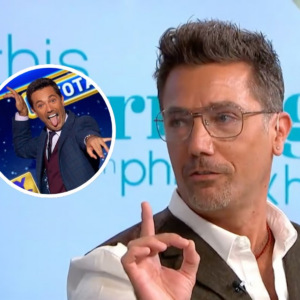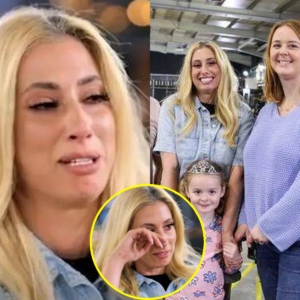Whatever you think of Caitlin Clark and how she’s navigated her fame so far, you have to admit it often seems like she’s playing a game she can’t possibly win.
The Indiana Fever star is undeniably already one of the best basketball players in the world, but the conditions, history, and narratives around the sport have informed the way everyone sees her, and not always for the best.
The dynamic between Caitlin Clark and Sheryl Swoopes highlights the complexities of sports discourse, especially when it intersects with race, history, and fan culture. Clark’s acknowledgment of her white privilege and her intent to use her platform to uplift Black players in the WNBA sparked conversations that extended beyond the court, drawing both praise and criticism, including from public figures like Megyn Kelly. At the Time dinner, Clark doubled down on her stance, reinforcing her commitment to blocking out negativity and staying focused on her goals.
Sheryl Swoopes’ relationship with Clark appears layered. While she has publicly denied harboring negative feelings toward Clark and has complimented her skills, Swoopes’ earlier comments questioning the legitimacy of Clark’s NCAA scoring record fueled perceptions of tension. Misstating that Clark had a fifth year to break the record may have further complicated the narrative. Swoopes later faced backlash, particularly from Clark’s passionate fanbase, some of whom she described as “evil” in their reactions toward her.
These interactions reflect broader themes in sports fandom and media narratives. Athletes like Clark are increasingly using their platforms to address social issues, while legends like Swoopes are tasked with navigating evolving conversations about their legacies and the impact of younger players. The clash between intent, perception, and fan reactions underscores the need for empathy and understanding, especially in a league as culturally significant and diverse as the WNBA.
Ultimately, this moment reinforces the importance of bridging generational gaps within the league while fostering mutual respect among players, fans, and commentators, as they collectively push the game forward.
“We have so much talent out there that has been unrecognized. And I don’t think we can pin it on just one player. I want to be very diplomatic about this,” Johnson said. “It’s just the structure of the way media plays out race. I’m going to be very honest. I feel really bad because I’ve seen so many players of color that are equally as talented and they never got the recognition they should have. And I think that right now it is time for that to happen.
Sheila Johnson’s comments about Caitlin Clark’s Time Athlete of the Year recognition and the broader implications for the WNBA reflect a delicate tension within the league and women’s sports more broadly. By suggesting that the honor should have gone to the entire league, Johnson raises an important point about collective achievement and the need for broader recognition of the WNBA’s depth of talent, especially given its historical lack of appreciation and visibility. Her concern about singling out one player, particularly in a league where Black athletes have been foundational, touches on longstanding frustrations over representation and equity in the narrative of women’s basketball.
The comparison to First Lady Jill Biden’s suggestion of inviting both LSU and Iowa to the White House highlights the complexities of progress and recognition in sports. While efforts to elevate women’s sports are necessary, they cannot come at the expense of respecting competitive traditions or inadvertently creating divides. Clark’s gracious pushback to that White House proposal demonstrated her understanding of sportsmanship and fairness—traits she continues to exhibit as she navigates her own fame.
The reality is multifaceted. The WNBA, built on the backs of predominantly Black athletes, still fights for the respect and spotlight it deserves. At the same time, Caitlin Clark’s undeniable talent and ability to draw record audiences have made her a unique figure in this era of the league’s growth. Both truths can coexist: the league must elevate all its stars while also embracing the attention Clark brings as an ambassador for women’s basketball.
This moment offers an opportunity for the WNBA to address these tensions head-on by ensuring all players feel valued while leveraging the attention Clark generates to benefit the league as a whole. A balance between individual accolades and collective celebration will be essential to fostering unity and progress.
Trying to diminish her doesn’t automatically raise the tide for everyone else. It doesn’t work like that.
The chances everyone can get everything they want in a situation where all of those things co-exist are slim. The hope is that everyone can find a way to see all of it as opportunities that can positively impact one another. We’ll see if we get there.
News
“Jesse Watters and Wife Emma DiGiovine Shock Fans with Surprise Baby News—Meet Their New Baby Girl and the Heartwarming Story Behind the Announcement!”
Fox’s Jesse Watters and wife Emma DiGiovine glow as they welcome new baby girl to the world FOX News host Jesse Watters and his wife Emma DiGiovine…
Linda Robson broke down in tears, saying she would DIE TOGETHER with her best friend Pauline Quirke on live television, leaving everyone stunned. What happened?
Linda Robson has spoken publicly about the heartbreaking dementia diagnosis of her long-time friend and Birds of a Feather co-star, Pauline Quirke. Last month, Pauline’s husband, Steve…
Pete Wicks Admits He ‘Cried Several Times’ Filming Emotional New Rescue Dog Series – The HEARTWARMING Moments That Left Him in TEARS!
‘They have transformed my life for the better’ Star of Strictly Pete Wicks admitted he “cried several times” while filming his new documentary, Pete Wicks: For Dogs’ Sake. A lover…
Gino D’Acampo just stirred up social networks with his FIRST POST after being fired from ITV
Celebrity chef and TV star Gino D’Acampo has been accused of sexual misconduct as over 40 people have come forward amid his alleged wrongdoing A defiant Gino D’Acampo has…
This Morning presenter prepares to become homeless, family home worth £4m about to disappear
The This Morning presenter lives in Richmond with his wife and children This Morning star Ben Shephard lives less than 30 minutes away from the ITV studios, in a beautiful home…
Stacey Solomon in tears and forced to walk off camera as Sort Your Life Out fans say ‘LIFE IS CRUEL’
Stacey Solomon had to step away from the camera, overwhelmed with emotion, while filming her show ‘Sort Your Life Out’ as she assisted a family from Leeds in decluttering their…
End of content
No more pages to load







